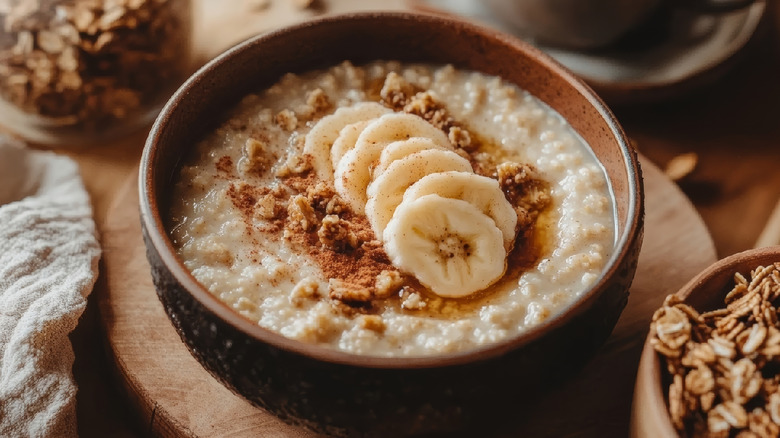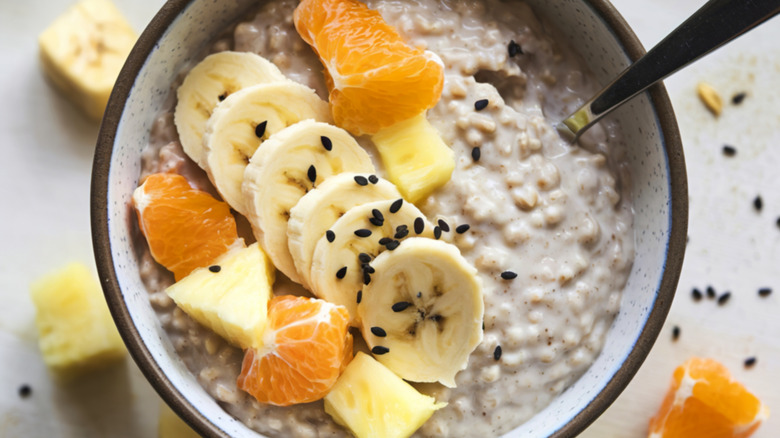The Creamiest Oatmeal Is Made In A Skillet, Not A Pot
When cooking oatmeal, you might think the only choice you have is between putting a bowl in the microwave or heating a pot on the stove. While Ina Garten's go-to breakfast is microwave oats, there is another, more ideal method to make a creamy batch of oatmeal: Cook it on the stove in a skillet rather than a pot. This trick, while slightly more demanding of your attention, results in a much creamier meal.
Ann Ziata, chef at the Institute of Culinary Education's New York City campus, explained to The Takeout why using a skillet — or, more specifically, a nonstick pan — is so optimal for making oatmeal. "Oatmeal gets its 'creaminess' from starch that has been released from the grains into the surrounding milk or water, which thickens the liquid as it cooks," Ziata told us, and she shared a number of ways to coax as much starch from the oats as possible.
"First, the nonstick coating will prevent starch particles from sticking to the side of the pan. Less starch on the pan means more starch mixed in and incorporated into the oatmeal," she said. The wider surface area of pans also makes a major difference in oatmeal's consistency. "A pan with a wide diameter will allow more water to evaporate more quickly, thus resulting in a thicker oatmeal," Ziata noted. With a pan rather than a pot, you'll also have to stir more frequently to encourage even cooking — this has an additional benefit. "Extra stirring helps release more starch from the oat grains, which will lead to a creamier porridge," she said.
Temperature matters for making creamy oatmeal
While making oatmeal in a nonstick pan is a great start, there are further measures to take to ensure the dish is as creamy and delicious as possible. Beyond swapping water for milk to make rich and silky oatmeal, the temperature of the liquid also matters. Starting the oats out in cold milk is crucial. "Hot liquid will cook the oats too quickly, without giving the grains time to release starches, and the oatmeal will be more fluffy than creamy," Ziata explained.
Ziata also said that using the appropriate level of heat is vital to the success of the dish. "Don't cook the oatmeal over high heat," the chef explained. "High heat will evaporate out too much moisture, which will dry up the oats. It will also cook the grains too quickly." Medium heat is sufficient to heat the mixture, but once you start to see some bubbles, it is best to drop it down to a simmer for the rest of the cooking time.
A secret ingredient that will seal the deal as far as ultra-creamy oatmeal is concerned. "If you want creamy and rich oatmeal, remove your finished oats from the heat and stir in an egg yolk. It'll add a delicious custard flavor while thickening the oatmeal," Ziata suggested. Cracking eggs into your oatmeal is a strategy we here at The Takeout have always been fans of, as they both give the dish a desirable texture and make it a much more filling meal overall.

